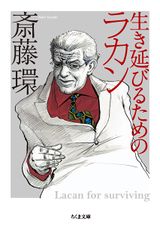Tamaki Saito
Tamaki Saito (斎藤 環, Saitō Tamaki) is a Japanese psychologist and critic. He is a fan of Hirohiko Araki and has done multiple interviews with him. He has also provided comments on Araki's works in multiple instances.
He is notable for being the leading expert on the phenomenon of hikikomori and for coining the term.[1]
Biography
Saito was born in Kitakami of the Iwate Prefecture. He graduated from Morioka First High School in 1980 and the University of Tsukuba in 1986. In 1990, he completed a doctoral course in medicine under the supervision of Hiroshi Inamura.[2] In his book released in 1998, "Social withdrawal--Adolescence without End,"[a] he defined social withdrawal and explained its development. The book made the public aware of the phenomenon and popularized the term "hikikomori."[3]
Saito specializes in the psychiatry of puberty and adolescence and has written/co-written many books on psychiatry. He's also done interpretations of contemporary culture, such as manga and anime, from a psychoanalytic perspective.[2]
JoJo's Bizarre Adventure
Saito first encountered Araki in 1997 when they had an interview with each other, discussing the current state of manga and Araki's creation process in Eureka Magazine.[4] With this meeting, he has stated that he was elated because he had been a fan for more than 10 years.[3] When they had another interview with each other again in 2007, he said it was nice to meet him again since they hadn't met since their first interview 10 years prior.[5]
In the March 15, 2009 issue of Brutus magazine, Araki and Saito were photographed together by Kishin Shinoyama at Araki's home. The article, titled "Interpersonal relationship" (人間関係), included the photo[b], biographies of the two of them, and comments about each other.[6] In January 2024, he tweeted about the recent passing of Shinoyama and the photo shoot he had with Araki for Brutus. He also mentions that after the camera was set up on a tripod, the shoot was finished in only about 15 minutes.[7]
In early 2012, Araki illustrated the cover of the paperback edition of his book "Lacan for surviving" (生き延びるためのラカン, Ikinobiru tame no Lacan). The book provides commentary on French psychoanalyst Jacques Lacan and acts as an introduction to psychoanalysis. The illustration depicts Lacan in a suit with Yoshikage Kira's skull tie.[8]
In October 2012, Saito was amongst the people who reviewed JoJo's Bizarre Adventure in columns that were included in the HIROHIKO ARAKI WORKS 1981-2012 catalog. He was also part of the special feature done on Araki from the monthly art magazine "Bijutsu Techo." In it, he provides an analysis that discusses Michelangelo's influence on Araki and the similarities between them as "soul twins" in the context of art history and their style of expression. He also discussed the nature of Stands in Neoplatonism.[9]
In December 2013, he tweeted his congratulations on Araki winning the Grand Prize in the manga division for JoJolion at the 2013 Japan Media Arts Festival.[10]
In December 2021, he tweeted in a response that Hisao Nakai is the Araki of psychiatry in the sense that he has many fans not only among his peers but also among professionals in other fields. He also mentions that maybe it's the other way around.[11]
Commentary
Interviews
| # | Interview | Type | Media | Published |
|---|---|---|---|---|
| 1 | Eureka (April 1997) | Interview |
Magazine |
April 1, 1997 |
| 2 | Eureka (November 2007) | Interview |
Magazine |
November 26, 2007 |
| 3 | Asahi Shimbun (June 2012) | Commentary |
Newspaper |
June 3, 2012 |
| 4 | ALL REVIEWS (December 2017) | Commentary |
Website/Online |
December 30, 2017 |
Gallery
Notes
References
- ↑ 1.0 1.1 https://web.archive.org/web/20220421175042/https://mainichi.jp/articles/20170818/ddl/k03/100/174000c
- ↑ 2.0 2.1 https://ja.wikipedia.org/wiki/斎藤環
- ↑ 3.0 3.1 Brutus #658, Pg 116
- ↑ Eureka (April 1997)
- ↑ Eureka (November 2007)
- ↑ http://atmarkjojo.org/archives/1818.html
- ↑ @pentaxxx (January 6, 2024), "一時代を築いた写真家、篠山紀信さんが亡くなられました。一度だけ被写体になったのは2009年、ブルータスの連載「人間関係」で、荒木飛呂彦さんとご一緒しました。噂通りの早撮りで、三脚にリンホフ スーパーテヒニカというごついカメラをセットすると15分くらいで撮影終了、でした。", on Twitter.
- ↑ https://natalie.mu/comic/news/64110
- ↑ Bijutsu Techo November 2012 Issue, Pg 76-83
- ↑ @pentaxxx (December 6, 2013), "荒木飛呂彦先生、遅ればせながら文化庁メディア芸術祭漫画部門大賞受賞おめでとうございます。", on Twitter.
- ↑ @pentaxxx (December 25, 2021), "情報ありがとうございます。同業者のみならず異業種専門家にファンが多いという意味では、中井久夫さんはまさに精神医学界の荒木飛呂彦…いや逆か…", on Twitter.




